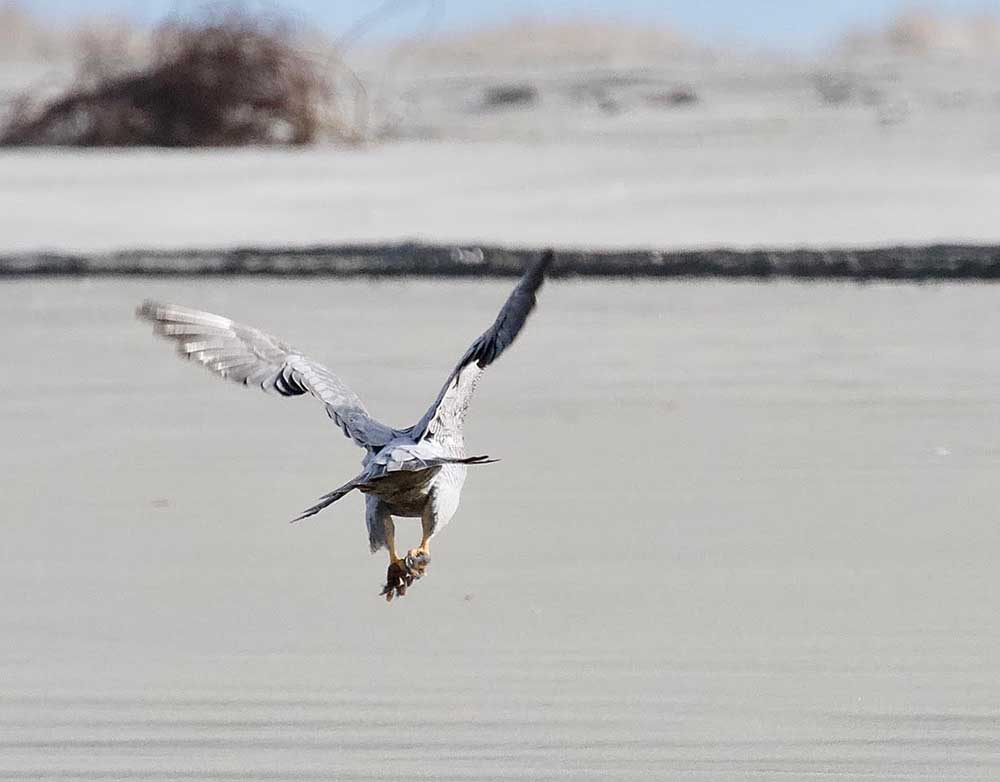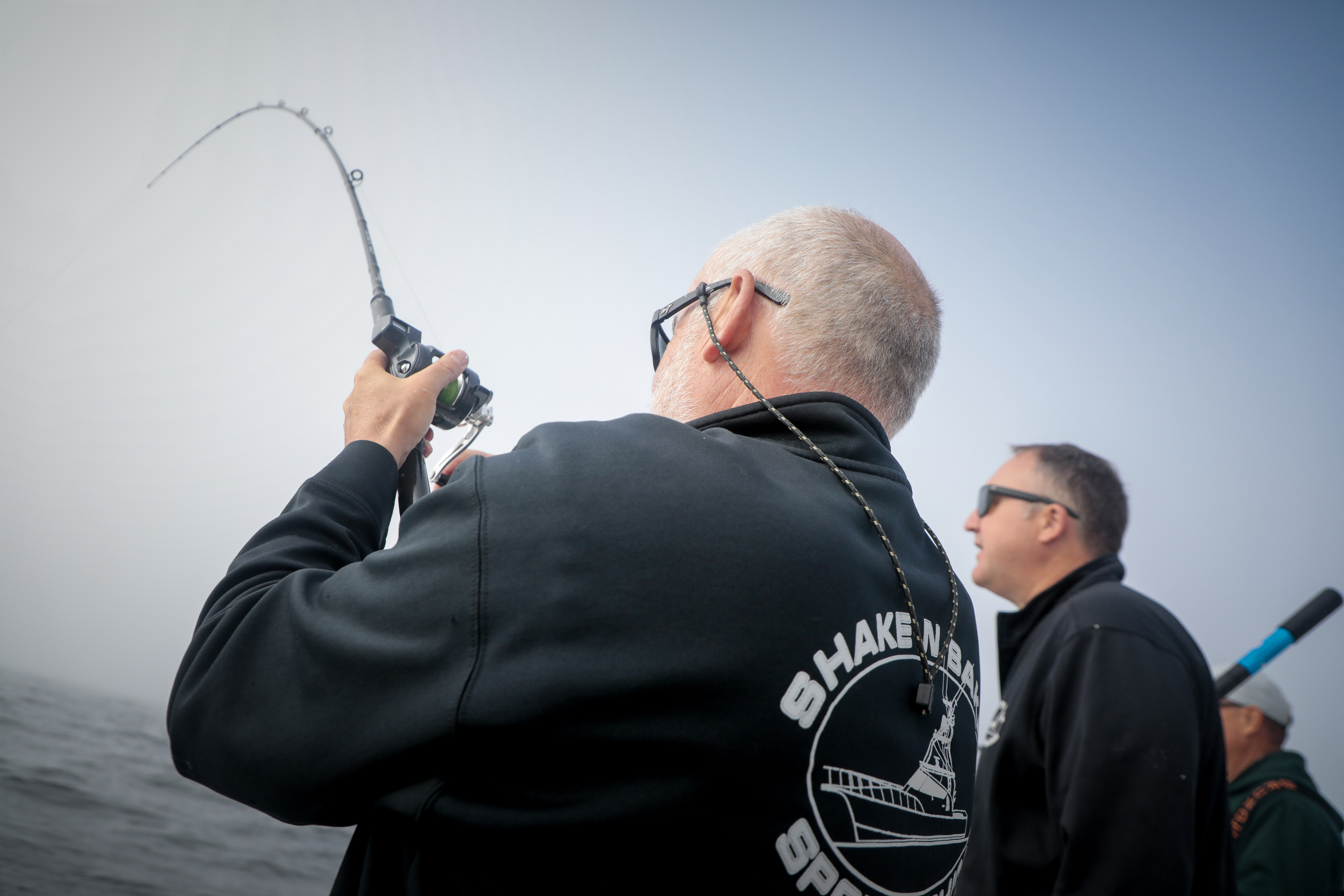Birding: Should I stay or should I go? Peregrine falcon surprise
Published 11:34 am Thursday, April 16, 2020

- Lunch is clutched in the peregrine’s talons.
I have been writing about the Winter Raptor Survey because it is a very exciting project to be involved in and one that is very important to the Peninsula. It appears as though our beaches and other areas offer excellent support for our raptors. We have habitat and the area serves them tasty meals. Our raptors are majestic in appearance and entertaining in their habits. These days, bald eagles soar overhead daily, sub-adults and adults alike. Red-tailed hawks perch high in the trees so they can scour the bay shore for delectable treats.
Trending
One raptor that we don’t often see is the peregrine falcon. We see it during each of the seasons except for summer when it goes off to other areas of Pacific County, and perhaps elsewhere, to nest. It prefers to nest on cliffs, but according to data from the Cornell Ornithological Laboratory, other sites include “electricity transmission towers, quarries, silos, skyscrapers, churches, and bridges” and “in the Pacific Northwest they may nest under Sitka spruce tree roots on steep slopes.”
Peregrines are sleek, smooth flying, swift and powerful. Their best field marks are a mustache, a longish tail and pointed wings and the fact that it is about the size of a crow. My friend Susan and I observed at least one on each of our three raptor surveys. We saw them twice on the beach and once on the bayside in Oysterville. We saw a peregrine on the beach during the March survey. It allowed us to get fairly close. When we reached the tipping point, which in essence was a long way away, the falcon flew off, and to our surprise, with a treasure in its talons. It was guarding and hiding its lunch! From then on, we watched from afar.
When we saw a peregrine on the bay side of the Peninsula, it was in the Oysterville area. Generally speaking, there is often one in this area. There are open wetland-like areas that are resting and feeding places for American wigeon, mallard, northern pintail, green-winged teal, various shorebirds, Wilson’s snipe and a few small mammals besides. The peregrine falcon’s favorite spots are relatively open, near water where it can perch on tree tops or fence posts as it searches for and hunts small and medium-sized birds, but peregrines have been known to take very large birds as well. The Cornell Lab cites one such example — a sandhill crane! Their typical and favorite meal consists of ducks and shorebirds. Peregrine falcons can be acrobatic when on the hunt. They fly swiftly and dive steeply in order to snag unsuspecting prey.
Trending
It is possible that this summer we might see a peregrine falcon. If so, it will likely be one that has found a Sitka spruce on steep slope with a wonderful root system to nest in. It would be wonderful and would give us a new nesting species for the Willapa National Wildlife Refuge and the Long Beach Peninsula. So, keep your eyes high, and maybe you will find a Peregrine falcon surprise!
”Common Birds of the Long Beach Peninsula,” by Kalbach and Stauffer, is available from the Chinook Observer, Bay Avenue Gallery, Time Enough Books and the Long Beach Peninsula Visitors Bureau.









